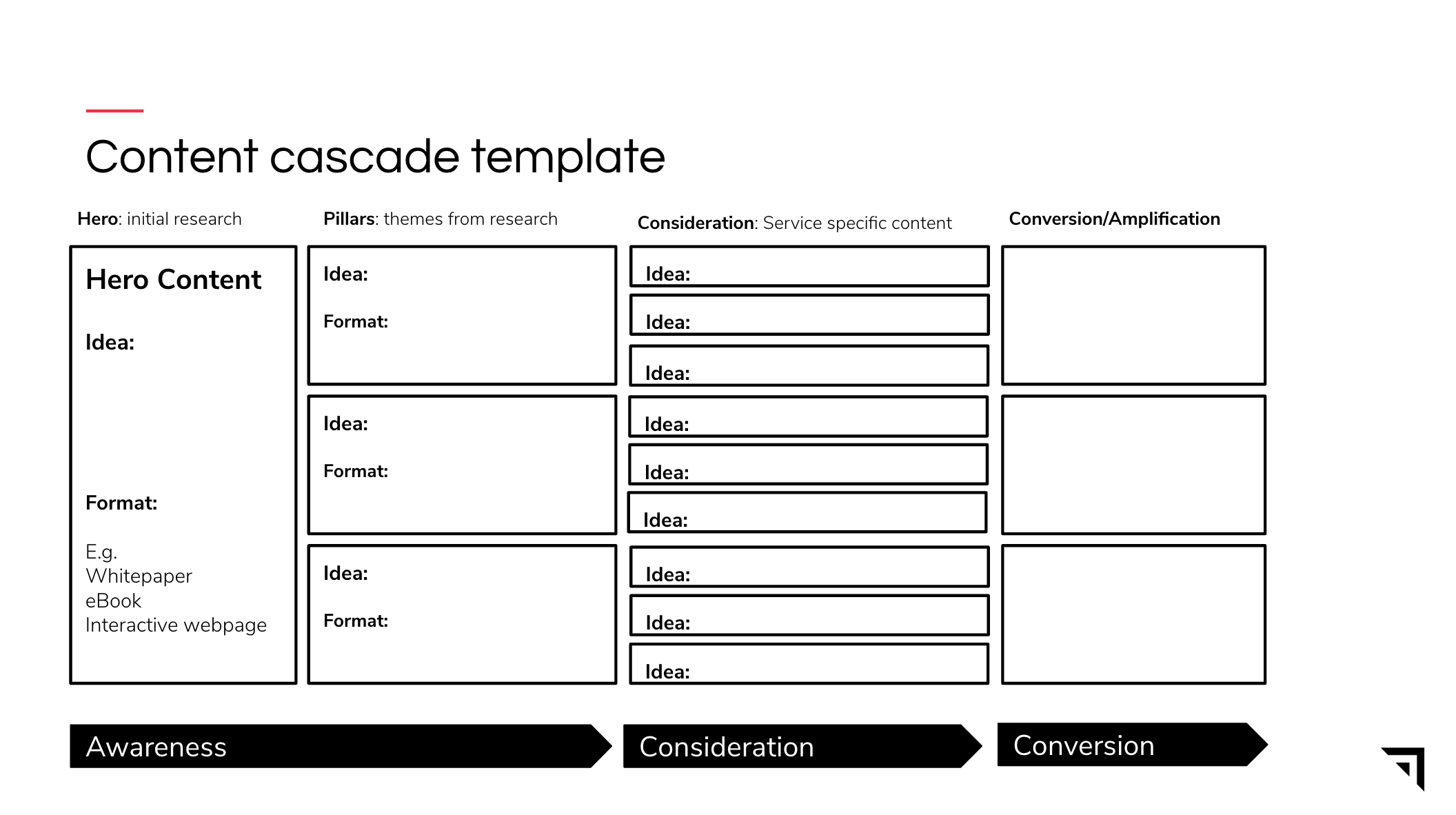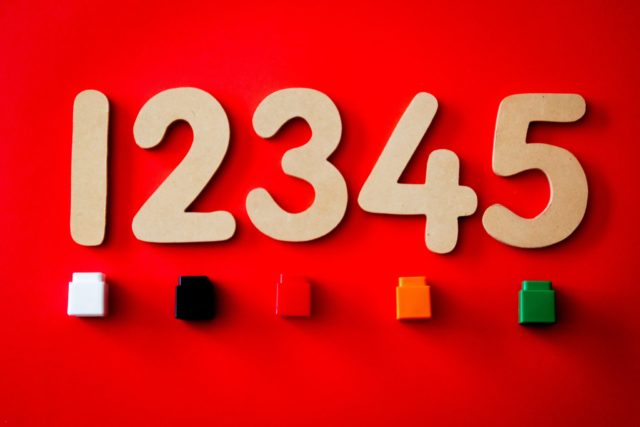Do you need a content marketing template? We all know creating great content is the cornerstone of inbound marketing. It enables you to position yourself as a thought leader in your industry, and it’s important to create a mixture of content that not only captures the attention of your readers but also inspires and educates them. Any content that you create should be used as a vessel to tell a story and communicate your brand values.
But it isn’t easy creating content on a repeatable scalable fashion.
And that is why we have created our Hallam Content Cascade methodology. It is a content marketing template that gives you a mental model for creating content
The Hallam Content Marketing Template: A Content Cascade
Content cascading is an effective way to create an end to end content experience for your customers.
A content cascade describes a method in which you create interconnected content mapped against the full marketing funnel. You are generating content specifically tailored to each step in the funnel: Awareness, Consideration, and Conversion.
You can use this content marketing template and framework as outlined below, as used at Hallam, to layout your initial ideas and map out where content will fit against each stage of the marketing funnel.

A template so you can print out and use for your own ideas.
Why is it better to create a cascade?
You may be accustomed to writing a single article and amplifying it, and find that you get minimal results. We are suggesting you need to move away from the single article approach. it takes too much time, and you’re wasting the opportunity.
Using a content cascade allows you to create more content, more efficiently. By approaching the content problem as a single campaign, you can repurpose one idea to piece of research to target multiple audiences with different needs using a variety of content formats.
Stand-alone topical articles aren’t the only way to engage your users. In fact, newspaper circulation has been in decline for the past 20 years according to Journalism.org. With the internet at your fingertips and a huge marketing mix available, we recommend exploring how your users consume content and map out your own content cascade campaign structure.
Remember to think big!
When coming up with your initial content ideas it’s important not to focus only on content formats and the end output. One of the biggest mistakes you can make during the ideation stage is becoming overly focused on content formats, which leads to over-use of formats such as infographics. This causes a tendency to become blind to the actual creative idea you’re trying to get across.
When looking at your content offering – there are 3 types of content you need to consider. These stages have different names depending on which agency you’re dealing with or which blog you’re referring to but we like to refer to each stage as Hero, Pillar, and Consideration content.
Hero content
Hero content is data and insight-driven. It is research-based which enables this to be a broad overarching piece of content that can cover a broad range of sectors. This type of content is usually industry-specific (E.g. Technology or Business) and often driven by a specific trend (E.g. Efficiency, Export.)
This piece of content is usually very broad and substantial. It shares multiple opinions and points of view from industry experts or data-driven research (which is often available for free if you search hard enough!)
Possible Content Formats:
- Whitepapers
- Ebooks
- Videos
Typically, Hero content is of such value that you can gate the content, asking visitors to provide their contact details in return for access to your content.
For example, Team Hallam has researched the Voice and Visual Landscape, and written a detailed white paper. You can take a look at how we leverage this piece of Hero Content here.
Pillar content
Pillar content is produced as a ‘key theme’ of the Hero content. It should address issues/themes that the audience cares about from the Hero piece. It is designed to retain the audience’s interest after they’ve seen the Hero content and showcase your brand’s value that can be added to them as a customer.
Key ideas heading this up are taken from the main Hero piece of content – including all relevant data, numbers, and research for this pillar.
Possible Content Types:
- Interactive graphics
- How-to guides
- Ebooks
Using the example above, in support of the Hero Content White paper, we created a series of blog posts supporting and related to and drawing upon the data contained in the Hero. Here is an example of pillar content
Consideration content
Consideration content is product/service focussed. It pinpoints specific themes and challenges from pillar content and how your brand can add value. Structure this content by finding bite-size chunks of content that are tangentially linked to your division and products. Content should be designed for a customer as they begin considering your products – e.g. ‘show me how you can help me’ webinar.
Possible Content Types:
- Webinars
- Videos
- How-to blog posts
As an example, you will want to select the specific, tailored content to meet the needs of a specific audience, for example, a sector (like manufacturing) or a particular service offering. Here is an example where we have created consideration content specifically for the manufacturing sector.
Amplification
So, now you have your content, how do you get people to see it? This is where you can really identify your key amplification channels. For different types of content, industries, and ideas you will need to have different amplification tactics.
Possible amplification tactics:
- Paid Social Media advertising (platform will depend on if your industry is B2B, B2C, etc.)
- Search/Display/Youtube advertising
- Digital PR and outreach
- Influencer outreach (here are some tools for you to try)
Connect your content
Each piece of content you create should complement others in your arsenal. Interconnections, how people navigate between the different pieces of content on the same theme, help make your content flow. Focus on Call To Actions to drive customers through to the next stage of content.
Each piece of content should be linked to another at various stages of the funnel using a central content hub, interlinking between each piece of content, Call to Actions to drive customers through the funnel and Remarketing based on user behaviour.
You will see in this post that we have interconnected various pieces of content that we have created in support of this Content Cascade methodology.
Internal linking doesn’t only make it easier for your visitors to discover your content, but it also helps improve your search engine rankings, and will also drive higher levels of engagement on your site.
Recap: using your content marketing template
Stay tuned for more of our own content around content cascades, but for now – this guide will hopefully give you a good structure to start out with. Remember to…
- Use real data to cover a broad topic for your Hero Piece
- Think about your customer’s needs
- Use CTA’s on every piece of content to drive the customer to another and connect all of your content together.
- Amplify your content to get people to read it.



